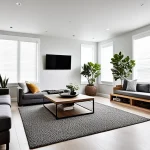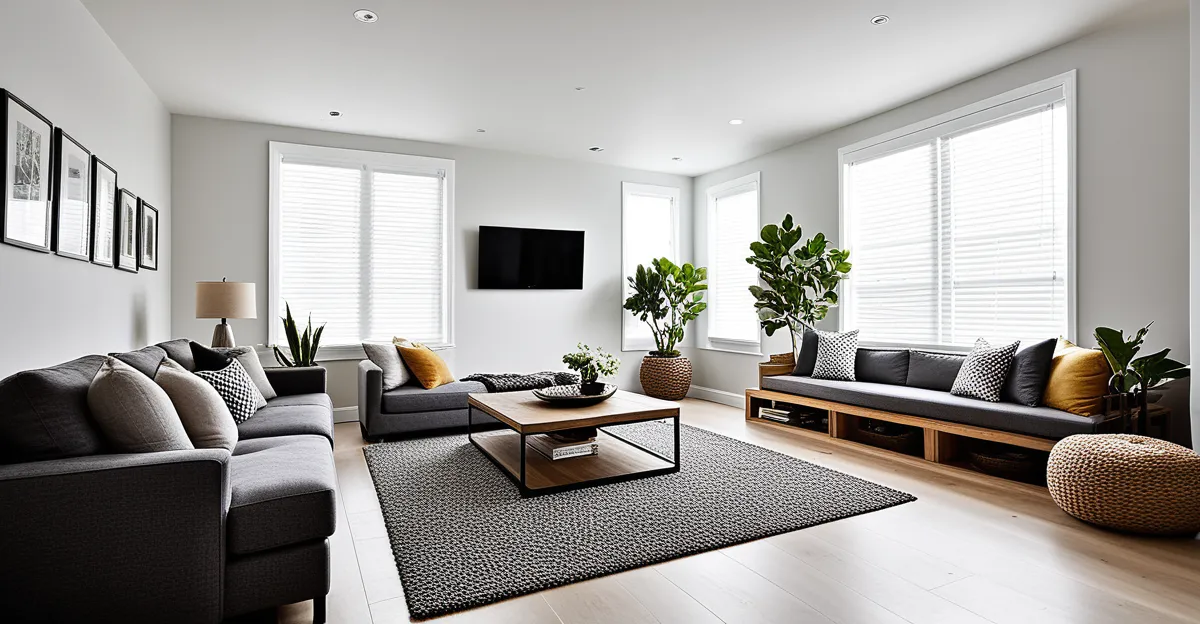Physical Benefits of a Comfortably Arranged Living Space
A thoughtfully arranged living space brings notable physical health benefits. Prioritising an ergonomic design ensures furniture and fixtures support body posture, reducing strain and discomfort. For example, ergonomic chairs and adjustable tables can alleviate back pain by promoting natural alignment during extended sitting periods.
Maintaining a functional layout enhances ease of movement and accessibility. This reduces unnecessary bending, stretching, or awkward movements that could cause muscle fatigue or injury. A well-organized home allows residents to navigate spaces effortlessly, decreasing the risk of trips and falls, especially important for children and elderly inhabitants.
Also to see : What are innovative storage solutions for UK apartments?
Effective home organization complements ergonomic principles by keeping frequently used items within easy reach. This minimises repetitive strain, which is common in poorly arranged environments. Additionally, proper storage solutions prevent clutter, further reducing hazards and creating safer surroundings.
In essence, combining these elements in your living space significantly improves physical well-being while increasing safety. This holistic approach benefits those seeking both comfort and functionality in their homes, ultimately fostering a healthier lifestyle through intelligent design and conscious spatial planning.
Topic to read : How can you enhance your UK home’s curb appeal effortlessly?
Mental and Emotional Advantages of Optimised Living Spaces
Creating a living space that supports mental clarity and emotional wellbeing relies heavily on thoughtful home organization and a clutter-free environment. Studies show that a tidy, well-ordered home can significantly reduce stress by eliminating visual chaos, which often overwhelms the brain. When daily surroundings are calm and intentionally arranged, the mind has room to relax and focus.
How does a clutter-free environment reduce stress? It minimizes distractions and decision fatigue, allowing residents to feel more in control and peaceful. This effect directly supports improved emotional balance by lowering anxiety levels and creating a soothing atmosphere.
Additionally, combining a functional layout with appealing, comforting aesthetics enhances mood. Simple adjustments—like using calming colours or natural light—can foster positivity and a sense of safety. This holistic design approach elevates overall happiness, making the home a true sanctuary.
In sum, an optimised living space nurtures both mental and emotional health by promoting stress reduction, increased focus, and a balanced mood. Prioritising these elements transforms your home into a haven that supports wellbeing inside and out.
Positive Impacts on Productivity and Daily Efficiency
An optimally arranged living space profoundly enhances productivity and time management. Workspace optimisation, achieved through deliberate furniture placement and adequate lighting, fosters focus and reduces distractions. For instance, positioning a desk near natural light and maintaining clutter-free surfaces can invigorate concentration and drive efficiency.
Systematic home organization plays a crucial role in streamlining routines. When storage solutions keep essential items within reach, residents spend less time searching for belongings, accelerating task completion. This efficient setup supports smoother home routines, allowing more time for both work and relaxation.
Moreover, dedicated areas for work and leisure improve separation of tasks, a vital factor in maintaining high productivity. Comfort-oriented spaces with ergonomic seating reduce physical strain, enabling sustained engagement without frequent breaks. This holistic approach to organising homes ensures tasks are tackled efficiently, reducing fatigue and enhancing overall daily effectiveness.
In sum, practical layout choices combined with smart organisation create an environment where productivity flourishes. Emphasising workspace optimisation and systematic storage empowers people to optimise their daily activities while maintaining comfort and wellbeing.
Expert-Backed Interior Design Strategies for Maximum Comfort
Interior designers emphasise combining interior design tips with practical, actionable strategies to maximise home comfort. One key piece of expert advice is prioritising a balance between aesthetics and functionality. For example, arranging furniture to complement both flow and usability enhances comfort without sacrificing style.
Experts recommend home comfort solutions such as layering lighting—ambient, task, and accent—to create adaptable atmospheres for different activities. This approach supports both relaxation and productivity. Designers also advocate for integrating smart storage to maintain order, which encourages ease in daily living.
Practical organisation advice includes zoning spaces by function, ensuring each room supports its intended purpose effectively. In living rooms, this might mean defining conversation areas with rugs or furniture grouping, while bedrooms benefit from calming palettes and minimal clutter.
Real-world examples frequently illustrate that small adjustments—like adding ergonomic seating or repositioning frequently used items—yield measurable improvements in comfort and usability. Following such evidence-based strategies empowers homeowners to transform their spaces into havens that improve wellbeing through thoughtful design principles.



